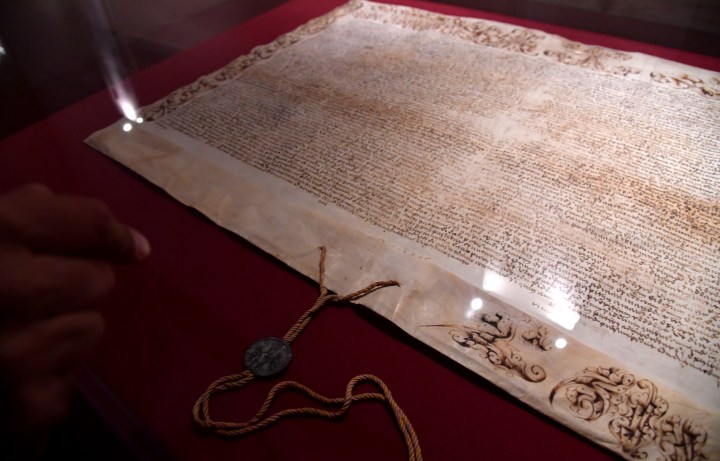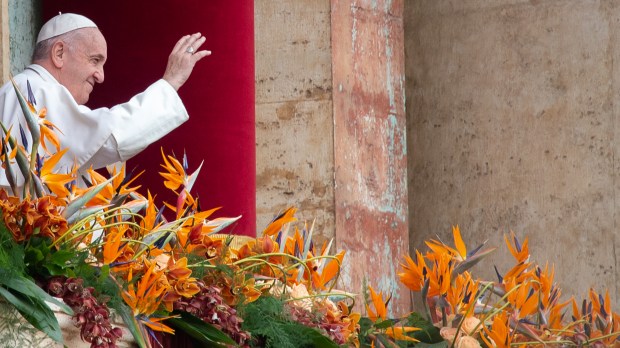A jubilee is a spiritual feast of considerable importance, organized every 25 years and involving Catholics from all over the world. Today the word is synonymous with celebration and joy, but it was first a sign of austere penitence … before grace did its work.
In the year 1300, at an age when Italy was merely a “geographical expression,” the “Boot” was struck by a series of earthquakes that devastated many of the great cities. The dead buried in the rubble were numerous, and the survivors, fearing that their roofs would fall on their heads, decided to take refuge in the surrounding countryside in large numbers. Cities and fortified places were abandoned, which greatly destabilized the peaceful trade that united principalities and kingdoms in the region.
Christendom itself was in an unfortunate position. The era of the Crusades was over, and the Ottoman Empire, which reigned supreme in the Balkans, the Levant, Africa and Spain, continued to exert pressure on the West. In Italy, the supporters of the Pope, the Guelphs, were opposed to those of the Emperor, the Ghibellines, in a terrible conflict that would last throughout the second half of the 13th century. Moreover, the Guelphs split with the black Guelphs disapproving of the pontiff’s interference in their affairs and the white Guelphs continuing to support the Holy See; blood was spilled once again. The multiplication of such calamities at the dawn of a new century raised the risk of a return of a form of millenarianism and its string of heresies… In short, things were going very badly in Italy.
Originally an expiation…
The ambient gloom which reigned inspired Pope Boniface VIII with a funny idea. He founded the Jubilee. The word, which we tend to associate with jubilation, originally meant expiation, in its sacrificial sense. Taken from the Book of Leviticus in the Bible, it refers to the goat’s horn that is blown every 50 years to mark the sanctity of the year, with the redemption of properties and other things.
The pope’s idea was to offer all Christians a way to make amends and to redeem themselves by offering them a unique and spectacular opportunity to change their lives.
In his bull Antiquorum habet fida relatio published on February 22, 1300, the 193rd pope in history invited all Christians to make the exceptional effort to go to Rome to receive a plenary indulgence. In order to help dispel their fears, pilgrims had to visit the tombs of St. Peter and St. Paul in their respective basilicas no less than 30 times!
This is far from the single passage to the four major basilicas practiced today (now a visit to St. Mary Major and St. John Lateran have been added).
Originally, the Holy Year of the Jubilee was to be celebrated every 100 years, but today it is celebrated every 25 years. The effort pilgrims had to make was significant, especially considering the difficult travel conditions of the time.

A huge success
However, the first Jubilee in history was a huge success. Nearly 200,000 pilgrims flocked to Rome each day. A considerable crowd when one takes into account that the population of the Eternal City of then was only 35,000 souls!
Dante, present at the time in the city, describes the scene in his Divine Comedy as a “thing to see”:
Come i Roman per l’essercito molto,
l’anno del giubileo, su per lo ponte
hanno a passar la gente modo colto,
che da l’un lato tutti hanno la fronte
verso ‘l castello e vanno a Santo Pietro,
da l’altra sponda vanno verso ‘l monte
When the people of Rome in crowd
Passes the St. Angelo bridge at the time of the jubilee,
Some go to visit the church of St. Peter,
The others returning, having made their prayer,
Move towards the city and Monte Giordano
The crowd is so dense that it is impossible
to pass each other on the Ponte San Angelo.
The event’s success was significant in every respect: political, because it affirmed the power of the papacy in the midst of the conflict between the Guelphs and the Ghibellines; economic, because the pilgrimage was a source of great revenue for the papacy and for the inhabitants of the city of Rome, and it revived trade throughout Italy; and of course, spiritual.
Since then, the number of Jubilees — marking the anniversary of the incarnation of Christ — has increased significantly. Reduced to 50 and then 25 years, the Holy Year has become a truly great celebration that punctuates the life of the Christian.
The announcement of the Jubilee Year of 2025 made by Pope Francis is therefore not a surprise. It is an “ordinary” jubilee in that it follows 25 years after the previous one, that of the Year 2000.
It reminds us that times are moving forward and that we must, as the pontiff often affirms, cultivate this idea of a Church “on the move,” capable of looking to the future.
For Pope Francis, this will be his second Jubilee, nine years after the one in 2016 dedicated to Mercy. As with the pilgrims of the 14th century, this 29th Jubilee of our era will be an opportunity to leave behind the gloom that tends to contaminate all hearts, caught up in the continuous flow of the years, in order to rediscover the authentic jubilation of true forgiveness.

